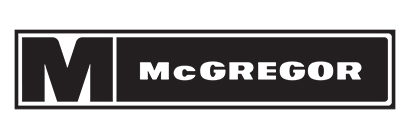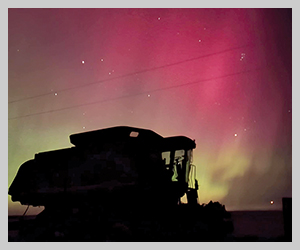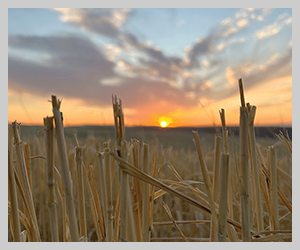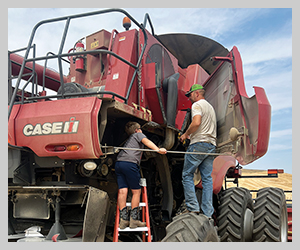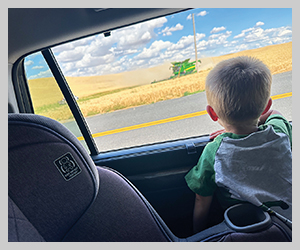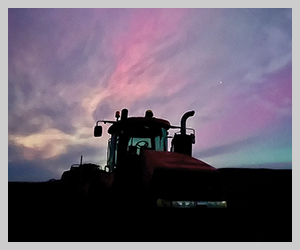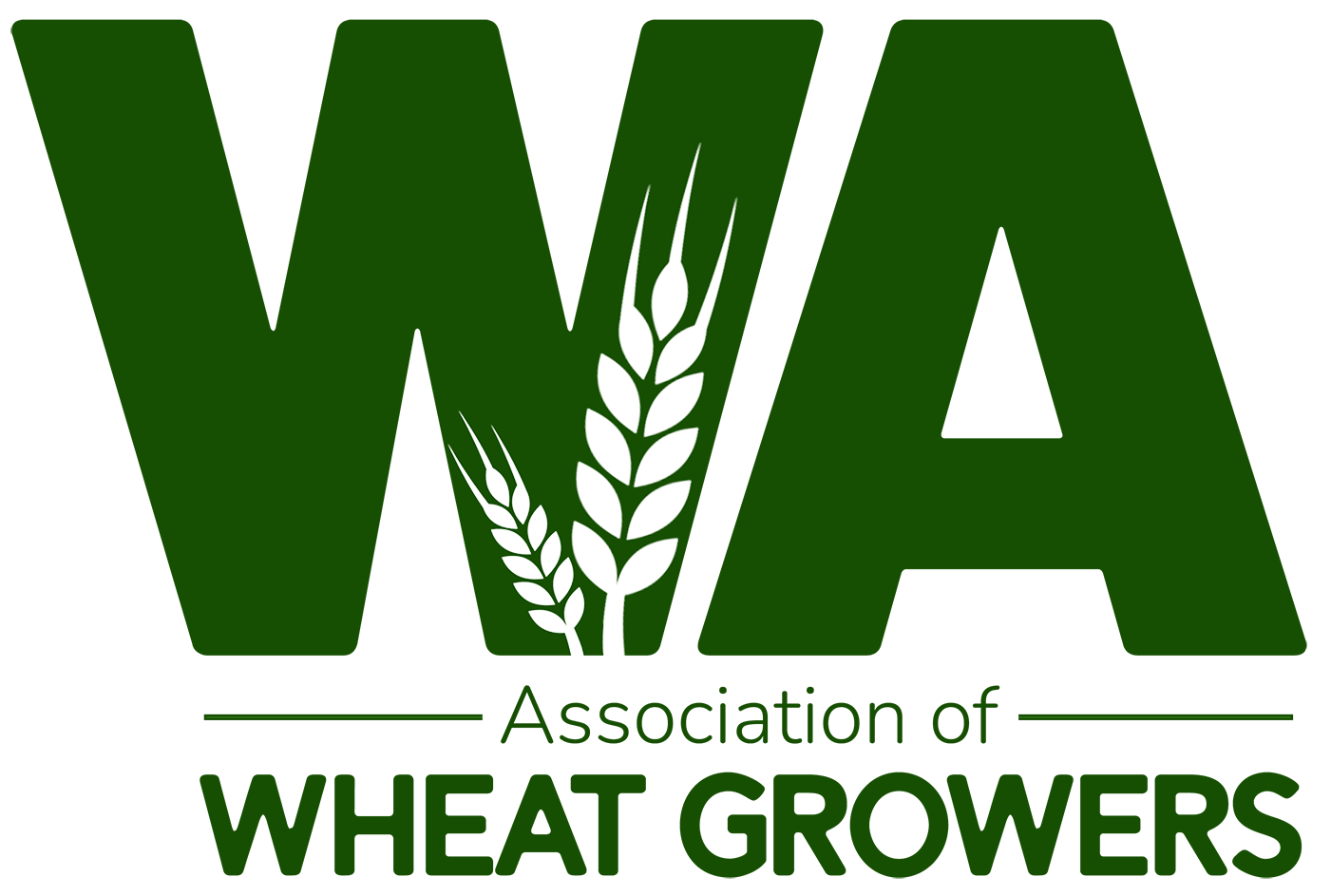Seeing the system D.C. staffers tour Lower Granite Dam, see infrastructure up close
2024October 2024
By Trista Crossley
Editor

In August, the Washington Association of Wheat Growers (WAWG), in partnership with the Washington State Potato Commission, The McGregor Company, and Northwest RiverPartners, brought more than a dozen U.S. congressional staffers from Washington, D.C., to Lewiston, Idaho, to tour Lower Granite Dam and learn why the Columbia-Snake River System is so critical to the region.
“For most of these staffers, they’ve heard about the dams but have never actually seen one in person. By experiencing how the dams work, showing them the state-of-the-art fish passage facilities, and letting them interact with the people who depend on the river system to transport goods, we hope they’ll return to D.C. with a better understanding of how important the river system is,” said Michelle Hennings, WAWG’s executive director.

The tour began with a bus ride to Boyer Park and a boat trip through the lock at Lower Granite Dam. On the bus to and from the dam, staffers learned about the role the dams play in power generation, irrigation, and transportation. Matt Harris, director of government affairs for the Washington State Potato Commission, explained that the dams on the lower Snake River irrigate about 62,000 acres of land that grows some of Washington’s most valuable crops, including potatoes, cherries, apples, grapes, and wheat. If the dams were to be removed, growers would need to re-engineer costly irrigation systems to account for lower water levels, and energy costs would go up.




Dennis Wright, general manager of AgriNorthwest, a large, irrigated farm in the Columbia Basin, said removal of the dams would cause the river channel to change, making it challenging to place irrigation infrastructure. Growers could lose a year’s worth of crops if water levels fall too low, and orchardists could see entire orchards die if they don’t have reliable access to water, especially during high temperatures.
Hennings and Casey Chumrau, CEO of the Washington Grain Commission, explained that barging competes with railroads to help keep transportation costs down. More than 60% of Washington-grown wheat moves through the lower Snake River dams. When Washington farmers use barging to move their wheat, they free up capacity on the railroads for other products to move. Eleven states funnel wheat through the Columbia-Snake River System. The system is the second largest export gateway in the U.S. for both corn and soy.
Chumrau pointed out that although farmers make up less than 2% of the U.S. population, everybody is connected to agriculture through food. One bushel of wheat weighs 60 pounds and yields about 60 pounds of whole wheat flour or 42 pounds of white flour. That’s enough for:
- 53 boxes of cereal.
- 200 sponge cakes.
- 420 three-ounce cinnamon rolls.
- 72 pounds of tortillas.
“With the current low price of wheat, farmers can’t afford to pay more for transportation,” Hennings said.
Crops aren’t the only thing that move through the lower Snake River dams. Leslie Druffel, outreach director for The McGregor Company, said during fall and spring planting seasons, her company relies on every mode of transportation to ship enough fertilizer upriver to meet demand.
“Fifty percent of yields is directly related to the appropriate and timely application of fertilizer,” she explained. Any delay threatens farmers’ yield potential. Barges also cost The McGregor Company less in labor, as it takes one man hour to unload liquid fertilizer from a barge vs. 50 man hours to unload the same amount from railcars.
Besides the people who traveled from D.C., the tour also included Gary Williams, executive director of the Upper Mississippi Waterway Association. Williams said staffers might be wondering why a representative from the Midwest was on the tour. He explained that U.S. waterways need to amplify their voices by working together to protect and maintain infrastructure on working rivers.




“What’s being faced here is likely to happen on other waterways,” he said, adding that shippers need reliability to move their products.
A fishy business
Once through the Lower Granite Dam lock, staffers were taken to the dam’s fish facilities where they saw biological information being taken from both juvenile and adult fish and learned about the steps that have been taken to improve fish survival rates, including state-of-the-art fish bypass systems and increased spill. Juvenile fish have dam passage survival rates of close to 99%.
The tour also included a look at the turbines.
Ports and panel
Lunch took place at the Port of Lewiston, where staffers learned about Idaho’s only seaport and the furthest inland port on the West Coast.
To bring all of the different industries that depend on the river together, a river users’ panel highlighting the importance of Marine Highway 84, or M-84, capped the tour. The panel featured Anthony Peña, government relations manager for the Pacific Northwest Waterways Association; Scott Corbitt, CEO of the Port of Lewiston; Jennifer Riddle, communications and marketing manager for Tidewater Corporation; Rob Rich, vice president of Marine Services for Shaver Transportation; Captain Jeremy Nielsen, president of Columbia River Pilots; and Kristin Meira, director of government affairs for American Cruise Lines.
Peña reviewed the litigation history of the lower Snake River dams, including the December 2023 agreement between the Biden administration, the states of Washington and Oregon, and four Tribes that put a 5-year pause on litigation in return for federal investment in fish habitat and tribally owned energy generation. Peña explained that river stakeholders were excluded from negotiations, and the agreement includes funding for studies on replacing the benefits the dams provide in energy generation and transportation.
One of the fastest growing segments on the lower Snake River is the cruising industry. American Cruise Lines is investing in infrastructure along the river, adding itineraries and vessels. Meira said they are trying to remind Americans that they have amazing vacation opportunities here at home and that there is a “huge fascination in other parts of the country with this river system.”
Both Shaver Transportation and Tidewater Corporation rely heavily on the ability to barge products the entire length of the Columbia-Snake River System. Riddle said Tidewater is investing in new biodiesel blending and storage facilities to take advantage of the safety and energy efficiency that barging offers. Rich called the river system “finely tuned” with plenty of capacity left and questioned how large equipment, such as wind turbines or heavy mining equipment that is too large for the roads, will be moved if barging isn’t an option.
Nielsen, who pilots ocean-going vessels from Astoria to Portland, said if the dams go, the system falls apart.
“We depend on predictability, and that’s what the dams provide,” he explained.
The tour wrapped up with dinner at a local winery.



Staffer statements
“I am amazed at the time and effort that is being dedicated to preserving the safe passage for the salmon population. Until you see it in person, you don’t realize how much is being done.”
— Randy Bogden, field representative for Rep. Matthew Rosendale (R-Mont.)
“Sen. Daines believes Montana’s wheat producers are the best in the country and appreciates the work of everyone involved in getting wheat from the farm to market.”
— Brett Slaughter, natural resource liaison for Sen. Steve Daines (R-Mont.)
“The various presentations and tours throughout the day truly highlighted the importance of the four lower Snake River dams. We learned that the massive structures play a vital role in the Pacific Northwest, providing clean hydropower, transportation, crop irrigation, recreation, flood risk management and so much more.”
— Kaci Ralstin, regional director for Sen. James E. Risch (R-Idaho)
“For the majority of the ride from Spokane to Lewiston, there were rolling fields of wheat as far as the eye can see. Hearing about the rich soils and fertile growing conditions, it’s no surprise that this area is the envy of the country.”
— Katie Donahue, transportation policy advisor for Rep. Seth Moulton (D-Mass.)
“I greatly enjoyed seeing first-hand the technologies used to allow the fish populations to safely pass through the dam. From the careful balancing of temperatures within the fish ladder to the implementation of new hydroelectric turbines to maintain optimal pressure levels, it is clear that the staff care greatly for the health and safety of the aquatic travelers passing through Lower Granite Dam.”
— Sloane Perkins, digital director for Sen. Mike Crapo (R-Idaho)
“Born and raised in Lewiston, Idaho, I’m proud to see the positive results of the efforts to improve fish passage at Lower Granite Dam. This achievement is a testament to our community’s commitment to responsible environmental stewardship and practical solutions that support both our economy and natural resources.”
— Katie Kingsley, senior legislative assistant for Rep. Russ Fulcher (R-Idaho)



